
Journal of Science and Transport Technology Vol. 4 No. 3, 11-23
Journal of Science and Transport Technology
Journal homepage: https://jstt.vn/index.php/en
JSTT 2024, 4 (3), 11-23
Published online 04/09/2024
Article info
Type of article:
Original research paper
DOI:
https://doi.org/10.58845/jstt.utt.2
024.en.4.3.11-23
*Corresponding author:
Email address:
hienntt82@utt.edu.vn
Received: 09/07/2024
Revised: 28/07/2024
Accepted: 30/07/2024
Enhancing concrete structure maintenance
through automated crack detection: A
computer vision approach
Nha Huu Nguyen1, Thuy Hien Thi Nguyen2,*, Linh Gia Bui2, Hai-Bang Ly2
1Port Authority of Inland Waterway Area 1, VIWA, Vietnam
2University of Transport Technology, Hanoi 100000, Vietnam
Abstract: This paper presents the development of an Artificial Intelligence (AI)
and Machine Learning (ML) model designed to detect cracks on concrete
surfaces. The objective is to enhance the automation, precision, and
performance of crack detection using the computer vision algorithm. Employing
a ML approach and the YOLOv9 algorithm, this study developed a system to
accurately identify concrete cracks from a diverse dataset. A total of 16,301
images of concrete surfaces, balanced between those with and without cracks,
were utilized. The dataset was split into various sets with different ratios to
ensure comprehensive model training. A transfer-learning methodology was
employed to optimize the model's performance. The accuracy of the model was
measured in each experiment to determine the optimal result. The most
successful experiment resulted in a model with a mean Average Precision
(mAP) of 94.6%, a Precision of 94.1%, and a Recall of 88.4%. These results
demonstrate the effectiveness of AI and ML in concrete crack detection.
Keywords: Artificial intelligence; Concrete; Crack detection; Machine learning;
Computer vision.
1. Introduction
Concrete is a composite material consisting
of aggregate bonded with fluid cement that
hardens over time. As the second-most-used
substance globally after water and the most widely
used building material, concrete plays a crucial role
in construction and infrastructure [1]. A crack in
concrete refers to a complete or partial separation
of the material into two or more parts due to
breaking or fracturing [2]. Surface cracks in
concrete structures are critical indicators of
structural damage and compromise its durability
[3]. Detecting these cracks is essential for the
inspection, diagnosis, and maintenance of
concrete structures [4]. However, automatic crack
detection presents significant challenges [5]. The
importance of crack detection in concrete
structures is growing, as it is vital for effective
inspection, evaluation, and maintenance.
Manual visual inspection, the most
commonly employed method in practice, is
inefficient in terms of cost, time, accuracy, and
safety [3]. Inspectors typically rely on their
experience, skill, and engineering judgment to
visually assess defects in concrete structures. This
method can involve determining the optimal
binarization parameters of commonly used image
binarization techniques and conducting
comparative analyses to identify their
characteristics in crack detection. Optimal
parameters are obtained by minimizing the
discrepancy between crack widths measured by

JSTT 2024, 4 (3), 11-23
Nguyen et al
12
digital cameras and optical microscopes [3].
Monitoring is usually conducted by regularly
evaluating the onset of surface cracks using optical
methods or extensometers [6]. However, this
process is inherently subjective, labor-intensive,
time-consuming, and complicated by the need to
access to numerous parts of complex structures
[7].
Advancements in automated inspection
techniques, particularly through AI and ML, are
addressing these challenges by providing more
objective, efficient, and comprehensive
assessments of concrete structures. Automated
systems can analyze large volumes of data with
high precision, reducing the reliance on manual
inspection and enabling more proactive
maintenance strategies. These technologies
facilitate continuous monitoring, early detection of
potential issues, and improved allocation of
resources for maintenance, ultimately enhancing
the safety and longevity of concrete structures.
AI image recognition has become widely
applied, with object detection being a fundamental
problem in computer vision involving the
recognition and localization of objects within an
image [8]. The YOLOv3 algorithm has been
employed for real-time detection, calculating the
sizes of detected cracks based on the positions of
projected laser beams on structural surfaces [9]. A
method for real-time logo identification using a
deep learning network architecture has also been
developed, customizing the YOLO algorithm to
simultaneously detect and identify logos in input
color images. Experimental results with the popular
FlickrLogos-47 dataset demonstrate that this
approach achieves high accuracy, with the added
benefits of simplicity, effectiveness, and fast
execution time, meeting the requirements of real-
time computing for logo recognition systems [10].
Furthermore, a method using ResNet-50 for
feature extraction and non-maximum suppression
(NMS) for selecting high-quality suggestion boxes
showed increased accuracy in detecting
improperly worn masks. This method enhances
practical applications and improves epidemic
prevention by accurately detecting mask usage
through feature extraction and prediction frame
generation [11]. Additionally, a novel real-time
object detection model based on the YOLOV2
framework has been developed for detecting tiny
vehicles in Automatic Driving Systems (ADS) and
Driver Assistance Systems [12]. An adaptive
learning model based on the YOLOV3 deep
learning network has been applied in self-driving
vehicle systems, traffic management, and vehicle
flow measurement at critical locations and routes
[13]. The YOLO model has also been utilized to
develop the HandGun Detector-C500, which
recognizes handguns through surveillance
cameras to provide early warnings related to
crimes involving firearms [14]. Moreover, automatic
crack detection and segmentation of masonry
structures have been achieved using YOLOV9-
Seg 2 and edge detection techniques [15]. Cha et
al. proposed a crack detection algorithm using
deep learning with a Convolutional Neural Network
(CNN), as well as algorithms for detecting multiple
types of damage, including steel delamination,
steel corrosion, and bolt corrosion, using a Faster
Region-based CNN (R-CNN) [9],[10]. These
advancements highlight the versatility and
effectiveness of AI and deep learning algorithms in
various applications, from structural health
monitoring to traffic management and security,
demonstrating their potential to enhance efficiency
and accuracy in numerous fields.
In the field of concrete crack identification,
several deep learning approaches have been
proposed. Choi et al. introduced SDDNet, a deep
learning network optimized for crack detection in
images with diverse background features [16].
Zhang et al. developed CrackU-net, a state-of-the-
art pixelwise crack detection architecture utilizing
advanced deep convolutional neural network
technology. This "U"-shaped model architecture,
involving convolution, pooling, transpose

JSTT 2024, 4 (3), 11-23
Nguyen et al
13
convolution, and concatenation operations,
surpasses traditional methods as well as fully
convolutional network (FCN) and U-net models for
pixelwise crack detection [17]. Kim et al. proposed
a method using R-CNN for crack identification and
a square-shaped marker for measuring the size of
detected cracks [18]. Beckman et al. suggested a
Faster Region-based Convolutional Neural
Network (Faster R-CNN) method for detecting
concrete spalling damage. This approach
automatically performs damage quantification by
processing depth data, identifying surfaces, and
isolating damage after merging outputs from the
Faster R-CNN with the depth stream of the sensor
[19]. Park et al. proposed a validated system
capable of successfully detecting cracks and
estimating their sizes without prior knowledge or
any installation [9]. Various published studies have
employed different algorithms for object detection,
with many utilizing versions of the YOLO algorithm
. Some research focused specifically on pavement
crack images and bridge inspection tasks, such as
the model proposed by Zhang et al., which was
trained and validated using 3,000 pavement crack
images (2,400 for training and 600 for validation)
with the Adam algorithm. CrackU-net achieved a
performance of loss = 0.025, accuracy = 0.9901,
precision = 0.9856, recall = 0.9798, and F-measure
= 0.9842 with a learning rate of 10−2 [17].
Research has also confirmed that, to date, no deep
learning method has been able to automatically
detect concrete spalling. The trained Faster R-
CNN presented an average precision (AP) of
90.79%, with volume quantifications showing a
mean precision error (MPE) of 9.45% at distances
ranging from 100cm to 250cm between the
element and the sensor [19]. These advancements
highlight the ongoing efforts to enhance the
accuracy and efficiency of concrete crack detection
through deep learning methodologies.
Concrete cracks found in structures vary in
terms of their width, depth, orientation, and
complexity due to the impact of environmental
conditions and structural loads. These variations
present challenges in accurately detecting and
classifying cracks. The YOLO (You Only Look
Once) algorithm, recognized for its real-time object
detection capabilities, is a potential solution due to
its capacity to process diverse object types and
scales within a unified framework. Prior research
has shown the effectiveness of YOLO in various
object detection applications, and its utilization for
concrete crack detection offers a chance to
enhance accuracy and efficiency in real-world
construction site inspections.
This study developed an AI computer vision
model using YOLOv9 based on a database of
16,301 images collected from various sources. The
paper is structured into five sections: Introduction,
Database Description and Analysis, Machine
Learning (ML) Methods, Results and Discussion,
and Conclusions and Future Research Directions.
This study contributes to the field by developing a
robust and efficient AI model for concrete crack
detection, utilizing the YOLOv9 algorithm and a
diverse dataset of 16,301 images, and
demonstrating its practical applicability for
enhancing infrastructure maintenance.
2. Database description and analysis
The dataset comprised 16,301 images of
various types of concrete cracks collected from
multiple sources, with 1,233 images sourced from
the internet and the remaining 15,068 images
obtained from an open database repository [20].
The training process aimed to diversify the dataset
to encompass a wide range of scenarios. The
selected images included various types of cracks
on concrete structures, considering factors such as
scale, observation location, observation direction,
and illumination level. Each image in the synthetic
dataset was precisely annotated with crack labels
and bounding boxes using the Roboflow platform,
which is designed for data management and
preparation in computer vision problems. The
dataset was divided into three subsets: training,
validation, and test sets. By default, the dataset

JSTT 2024, 4 (3), 11-23
Nguyen et al
14
was split in a 70-15-15 ratio, used during training to
tune the model's hyperparameters and to monitor
and evaluate the model's performance after the
training and tuning process. Examples of the
collected dataset are shown in Fig. 1, whereas the
labeling process of images is shown in Fig. 2.
Fig. 1. Illustration of images collected in the dataset
Fig. 2. Example of labeling process of images

JSTT 2024, 4 (3), 11-23
Nguyen et al
15
3. Machine learning methods
3.1. YOLO overview
YOLO (You Only Look Once) is a unified,
real-time object detector designed to address
object detection as a regression problem,
predicting spatially separated bounding boxes and
associated class probabilities from full images in a
single evaluation [8]. Since its introduction in 2015,
YOLO has undergone several iterations, with the
latest version, YOLOv9, released in 2024. This
version has achieved high detection accuracy and
fast inference times as a single-stage detector,
surpassing many other object detection algorithms.
Fig. 3 illustrates these advancements.
Developed by Chien-Yao Wang, I-Hau Yeh,
and Hong-Yuan Mark Liao, YOLOv9 stands out as
the fastest general-purpose object detector
currently available, pushing the state-of-the-art in
real-time object detection. Its ability to generalize
well to new domains makes it ideal for applications
requiring rapid and robust object detection [21].
Processing images with YOLO involves running a
single convolutional network on the image and then
thresholding the resulting detections based on the
model’s confidence. This process is illustrated in
Fig. 4.
Fig. 3. Development process of YOLO
Fig. 4. The detection system of YOLO
3.2. Performance indices of model
Determining the training set, validation set,
and test set is crucial in a ML project. The training
set is fundamental for learning and model
development, the validation set is essential for
tuning and preventing overfitting during training,
and the test set is critical for an unbiased final
evaluation of the model's performance. A
successful ML project requires all three sets to
ensure the model is well-trained, properly tuned,
and accurately evaluated [22].
In object detection, Average Precision (AP)
summarizes the precision-recall curve into a single
value representing the area under the curve,
providing a single metric for evaluation. Mean
Average Precision (mAP) is crucial for a balanced
evaluation in tasks like object detection and multi-
class classification, offering a comprehensive view
of model performance. Additionally, Precision and
Recall are critical metrics for evaluating model
performance, with values that vary as the
confidence threshold changes. Various loss
components are used to train object detection
models effectively by penalizing different types of
prediction errors. Box loss evaluates the accuracy
of the model's predictions regarding the location
and size of objects within each image. Class loss
measures the error in predicting the class labels of
detected objects, ensuring the model accurately
identifies the class of each object within the

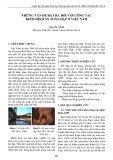




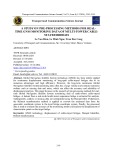

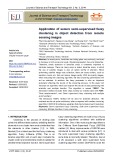
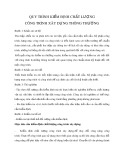
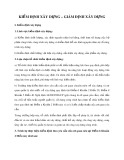





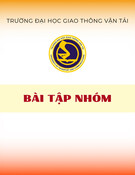

![Bài giảng Quản lý vận hành và bảo trì công trình xây dựng [chuẩn nhất]](https://cdn.tailieu.vn/images/document/thumbnail/2025/20251006/agonars97/135x160/30881759736164.jpg)







